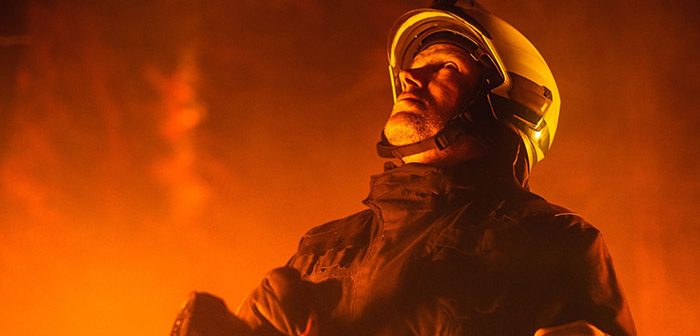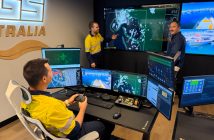
Bushfires pose a significant threat to Australia and New Zealand’s environment, economy, and communities, with traditional detection methods often failing to provide timely warnings.
Artificial intelligence-powered bushfire detection systems are emerging as a vital tool to enhance early intervention, protect forests, and safeguard lives and infrastructure in response to this challenge.
These smart systems use advanced technology to identify fires at their initial smouldering stage, giving emergency services and communities crucial minutes that can significantly change the outcome of bushfire events, according to Dryad Networks.
“AI-powered bushfire detection systems with ultra-early detection capabilities give emergency responders a decisive head start in the event of a bushfire,” said Dryad Network VP of Sales, Technology, and Operations Sohan Domingo. “This lets them mobilise more rapidly and strategically to the precise location of the burn.”
“This means that response teams can contain outbreaks at their nascent stage, preventing them from escalating into uncontrollable blazes that devastate large areas of wilderness and inhabited regions and directly contributes to the safety and preservation of Australia and New Zealand’s diverse ecosystems and communities.”
AI-powered systems begin monitoring long before fires are visibly established, unlike conventional detection methods that rely on visible flames or satellite imagery.
The core of this capability are networks of solar-powered sensors placed across bushland, which detect the chemical signatures of fire during its earliest smouldering stage. This raises the alert well in advance of visible flames, giving emergency services more time to act.
Smart sensor networks help land managers cover vast areas that would otherwise go unwatched by monitoring even remote and rugged landscapes continuously so that no region remains unprotected. This is crucial in areas where accessibility and visibility are limited. The result is faster more localised intervention that can stop bushfires before they spread out of control.
Smart sensor networks are strengthened by complementing autonomous drones equipped with advanced AI, which can respond rapidly to detected threats and further enhance the effectiveness of emergency operations.
Drones arrive at the precise location of the fire swiftly once alerted, giving responders an accurate, real-time view of the situation. This immediate insight lets firefighting teams act decisively, preventing fires from spreading and causing widespread devastation.
Future drone advancements will actively suppress fires through innovative methods such as foam dispersal or acoustic technology. This will further decrease the reliance on human crews in high-risk situations, improving the safety and effectiveness of bushfire management.
“The environmental implications of adopting AI-powered bushfire detection systems are significant,” said Domingo. “Early bushfire containment protects people and communities, preserves biodiversity and ecosystems, and curtails carbon emissions associated with widespread bushfires significantly.”
“Reducing emissions through effective fire management becomes increasingly critical as climate change continues to exacerbate fire conditions across Australia and New Zealand,” he added. “AI-driven systems can play an instrumental role in both countries’ broader climate mitigation and adaptation strategies by preventing extensive environmental destruction.”
These detection and response technologies also integrate with existing emergency management frameworks. Data from AI sensors and drone surveillance systems feed directly into emergency response platforms and fire analytics tools, creating a cohesive operational picture for firefighting authorities. This integration supports efficient coordination among multiple response units, including ground crews and aerial firefighting teams, enhancing the effectiveness of fire suppression efforts.
The Australian and New Zealand Federal Governments have recognised the need for greater disaster preparedness. The Australian Federal Government committed AUD28.8 million to disaster preparedness in the 2025-2026 Federal Budget, including AUD17.7 million for the Bushfire Community Recovery and Resilience Program.
In New Zealand, the government has committed NZD70 million over seven years (2024–2031) to the Natural Hazards and Resilience Platform, an initiative designed to strengthen national resilience to natural disasters by supporting science across the four Rs: reduction, readiness, response, and recovery.
AI-powered bushfire detection technologies align closely with Australia and New Zealand’s commitment to proactive disaster resilience. Reducing reaction times and improving accuracy in identifying and locating fire threats gives communities a vital protective barrier against increasingly frequent and severe bushfire events.
Businesses and critical infrastructure operators also benefit directly from improved asset protection, minimising the disruption and financial impact associated with large-scale bushfires.
AI detection systems can be customised to accommodate specific regional conditions and management strategies, incorporating local expertise into broader technological solutions. Collaborating with local communities and Indigenous groups, especially those with traditional knowledge of land management and fire practices, can make the rollout of detection technologies more adaptive and effective in practice.
“The integration of AI technology into bushfire detection and suppression systems represents a critical advancement toward a more resilient Australasia,” said Domingo. “Authorities and communities can reduce the destructive impacts of bushfires significantly by embracing these innovations to better protect lives, ecosystems, and economic assets.”
“Continued investment and development in these AI-driven solutions will remain essential in shaping a safer, more sustainable future for the forests and communities of Australia and New Zealand as climate challenges intensify.”






